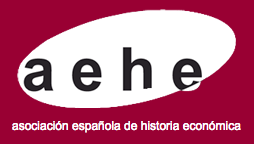The Evolution of Income and Inequality among Mexico City’s Construction Workers during the “Independence Era”: 1783-1853
DOI:
https://doi.org/10.33231/j.ihe.2023.05.008Palabras clave:
labor, inequality, Mexico, independence, N36, N96, D6, J24Resumen
This paper explores inequality levels within the construction sector in Mexico City between the 1780s and the 1850s examining new microdata of daily wages that discriminate skill levels and individual variations. We study the evolution of skill premiums (foremen, masons, and laborers), and build a Theil inequality index of the entire distribution. We find a clear discontinuity in the trends taking place around 1814, when the wage level of unskilled laborers increased, and inequality decreased. An opposite change took place circa 1840 when inequality bounced back and approached its late colonial levels. We hypothesize that institutional change, namely the abolition of guilds (1814), shifts in the relative power of elites and manual laborers, and the cycle of urban growth in Mexico City are behind these trends.
Descargas
Publicado
Cómo citar
Número
Sección
Licencia
Derechos de autor 2023 Israel G. Solares, Aurora Gómez-Galvarriato, Amilcar E. Challú

Esta obra está bajo una licencia internacional Creative Commons Atribución-NoComercial-SinDerivadas 4.0.
Aquellos autores/as que tengan publicaciones con esta revista, aceptan los términos siguientes
- Los autores/as conservarán sus derechos de autor y garantizarán a la revista el derecho de primera publicación de su obra, el cuál estará simultáneamente sujeto a la Licencia de reconocimiento de Creative Commons Reconocimiento-No comercial-Sin obra derivada 4.0 Internacional que permite a terceros compartir la obra siempre que se indique su autor y su primera publicación esta revista, y no permite hacer uso comercial de la misma ni tampoco obras derivadas.
- Los autores/as podrán adoptar otros acuerdos de licencia no exclusiva de distribución de la versión de la obra publicada (p. ej.: depositarla en un archivo telemático institucional o publicarla en un volumen monográfico) siempre que se indique la publicación inicial en esta revista.
Plagio y fraude científico
La publicación de un trabajo que atente contra los derechos de propiedad intelectual será responsabilidad de los autores/as, que serán los que asuman los conflictos que pudieran tener lugar por razones de derechos de autor. Los conflictos más importantes pueden darse por la comisión de plagios y fraudes científicos.
Se entiende por plagio:
- Presentar el trabajo ajeno como propio.
- Adoptar palabras o ideas de otros autores sin el debido reconocimiento.
- No emplear las comillas u otro formato distintivo en una cita literal.
- Dar información incorrecta sobre la verdadera fuente de una cita.
- El parafraseo de una fuente sin mencionar la fuente.
- El parafraseo abusivo, incluso si se menciona la fuente.
Las prácticas constitutivas de fraude científico son las siguientes:
- Fabricación, falsificación u omisión de datos y plagio.
- Publicación duplicada.
- Conflictos de autoría.





